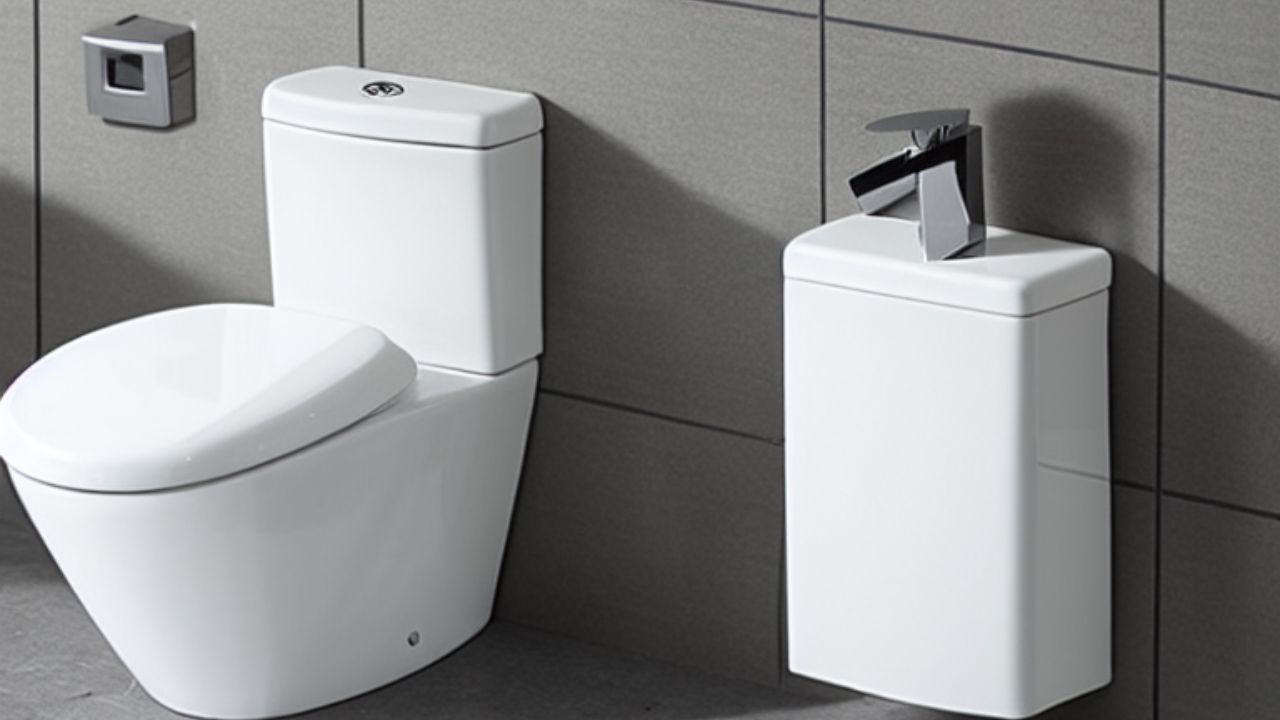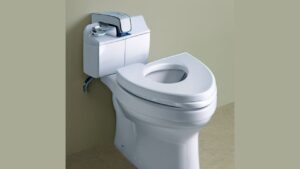This post contains affiliate links, meaning I may earn a commission at no extra cost to you if you make a purchase. As an Amazon Associate, I earn from qualifying purchases
When it comes to household repairs, one of the most common issues that homeowners face is a faulty toilet flush valve.
A flush valve controls the amount of water that flows into the toilet bowl, and a malfunctioning valve can lead to a constantly running toilet or poor flushing performance.
To ensure your toilet is functioning correctly, it is essential to understand how to replace a toilet flush valve.
Not only can this save you money on hiring a professional plumber, but it can also give you peace of mind knowing that you have the skills to tackle this repair independently.
Also, it’s important to note that replacing a toilet flush valve must be taken seriously. It requires specific tools and knowledge to ensure the job is done correctly and safely.
This guide will provide all the information you need to replace your toilet flush valve and keep your bathroom functioning smoothly.
Identifying the Problem
The first step in replacing a toilet flush valve is identifying the problem.
Several common signs indicate a faulty flush valve, including:
- Constantly running toilet: If you notice that your toilet is running even after it’s been flushed, this could be a sign that the flush valve is not functioning correctly.
- Poor flushing performance: The flush valve may be the culprit if your toilet is not flushing correctly or seems clogged.
It’s essential to identify the problem before proceeding with the replacement process. It will ensure that you are replacing the correct part and can help prevent any further issues.
You should also ensure you know the toilet model and check the compatibility of the flush valve you will buy with your toilet to avoid any issues.
Once you have identified the problem and have the correct replacement parts, you can proceed with the replacement process.
Finding the Right Replacement Parts
Compatible Replacement for Specific Toilet Models
- Not all flush valves are the same, and finding a replacement compatible with your toilet model is essential.
- If you need help deciding which flush valve to purchase, consult a professional plumber or check the manufacturer’s website for recommendations.
Consult with a Professional Plumber if Unsure
- If you need help deciding which flush valve to purchase, it’s always best to consult a professional plumber.
- This will also help you avoid issues arising from an incompatible flush valve.
Remember that it is always better to double-check the compatibility of the parts you buy with your toilet to avoid any issues.
Safety Precautions
Turn off the Water Supply Before Replacing
- Turning off the water supply to your toilet is a necessary safety precaution that must be taken before beginning the replacement process.
- This will ensure that no water flows into the tank while you’re working on the flush valve, which can prevent accidents or damage to the new parts.
Safety Hazards and How to Avoid Them
Potential hazards include:
- Electric shock hazards: Make sure to turn off the power supply to the toilet before working on the flush valve
- Slipping hazards: be aware of wet surfaces and wear slip-resistant shoes.
- Chemical hazards: be aware of the chemical products you will use during the process, and wear gloves and eye protection.
Replacement Process
List of Necessary Tools:
- Toilet flush valve tool
- Adjustable wrench
- Putty knife
- Teflon tape
Step-by-Step Instructions for the Replacement Process
- Turn off the water supply to your toilet
- Remove the tank lid and flush the toilet to empty the tank
- Use the toilet flush valve tool to remove the old flush valve
- Clean the tank opening thoroughly and apply Teflon tape to the threads of the new flush valve
- Install the new flush valve, making sure it is tightened securely
- Reattach the tank lid and turn the water supply back on
- Flush the toilet and check for any leaks or issues.
Troubleshooting Common Problems
Issues that may Arise During the Replacement Process
- Leaking: if the flush valve leaks, it may be due to a loose connection or an improperly installed part. Make sure to check all the connections and ensure that they are tightened securely.
- Difficulty removing the old flush valve: if the old flush valve is stuck, you may need to use a specialized tool or seek the help of a professional plumber.
- Difficulty installing the new flush valve: If it does not fit properly, it may be due to an incompatible part. Double-check the compatibility of the new flush valve with your specific toilet model before proceeding.
Troubleshooting Tips After Replacing
- Running water: If the tank’s water runs, it may be due to a faulty flush valve or an improperly installed part. Make sure to check the flush valve and ensure that it’s functioning correctly.
- Poor flushing performance: if the toilet is not flushing correctly, it may be due to a clogged flush valve or an improperly installed part. Make sure to check the flush valve and ensure that it’s functioning correctly.
- If you encounter problems after the replacement is completed, it’s always best to consult a professional plumber.
Cost Comparison
DIY vs. Hiring a Plumber: Cost Savings?
- Replacing a toilet flush valve yourself can result in significant cost savings compared to hiring a professional plumber.
- Depending on your location and complexity, a professional plumber may charge an hourly or flat fee for the replacement service, ranging from $50 to $200 or more.
- However, performing the replacement yourself will require an initial investment in the necessary tools and replacement parts, but it can save you money in the long run.
Estimating Tools Parts Cost
- The cost of the necessary tools and replacement parts can vary depending on your location and the tools and parts needed for your toilet.
- A typical toilet flush valve tool can cost around $20, an adjustable wrench around $10, a putty knife around $5, and Teflon tape around $2.
- The cost of the replacement flush valve can vary, but it can be found on average around $20 to $40
- Researching and comparing prices is essential to find the best deal on the necessary tools and parts.
While performing the replacement yourself will require an initial investment, it can result in significant cost savings compared to hiring a professional plumber.
It’s essential to consider the cost of the necessary tools and replacement parts when evaluating the cost savings of performing the replacement yourself.
Maintenance
Importance of regular maintenance on the flush valve to prevent future issues
- Regular flush valve maintenance prevents future issues and ensures proper function and longevity.
- Regular maintenance can include inspecting, cleaning, and tightening bolts on the flush valve.
- Regular maintenance can also include the replacement of worn or damaged parts.
Tips for Maintaining the Flush Valve
- Perform regular inspections of the flush valve.
- Clean the flush valve regularly to ensure that it is free from debris.
- Ensure that all connections on the flush valve are tightened securely.
- Replace any worn or damaged parts promptly.
- Consult with a professional plumber if you need clarification on the maintenance process.
- Follow the manufacturer’s recommendations for maintenance and repair.
- Regular maintenance can save you time and money and ensure your flush valve works optimally.
Following these tips and performing regular maintenance, you can ensure that your flush valve is functioning correctly and will have a longer lifespan.
Different Types of Flush Valves
- Dual-flush valves: These allow users to choose between a full flush and a reduced flush, saving water and money—
Pros: water savings.
Cons: more complex than traditional flush valves. - Pressure-assisted flush valves: These valves use air pressure to enhance the flush, improving the performance of low-flow toilets.
Pros: improved flush performance.
Cons: noisier than traditional flush valves. - Gravity flush valves: These valves use gravity to enhance the flush, improving the performance of low-flow toilets.
Pros: improved flush performance.
Cons: noisier than traditional flush valves.
Explaining When to Choose a Different Flush Valve
- A dual-flush valve may be a good option if a user wants to save water and money.
- If a user is experiencing poor flush performance with a traditional flush valve, a pressure-assisted or gravity flush valve may be a better option.
- Sometimes, users may opt for a different type of flush valve due to specific requirements such as low water pressure or compliance with local building codes.
Conclusion
Replacing a toilet flush valve is a task that requires proper tools and knowledge.
The article has discussed the steps involved in the replacement process, including identifying the problem, finding the right replacement parts, the replacement process, and troubleshooting common issues.
Safety precautions are also discussed, such as cost comparisons, the importance of regular maintenance, and alternatives to flush valves.
The article also provides tips for maintaining the flush valve to ensure proper function and longevity.
Regular maintenance can save you time and money and ensure your flush valve works optimally.



